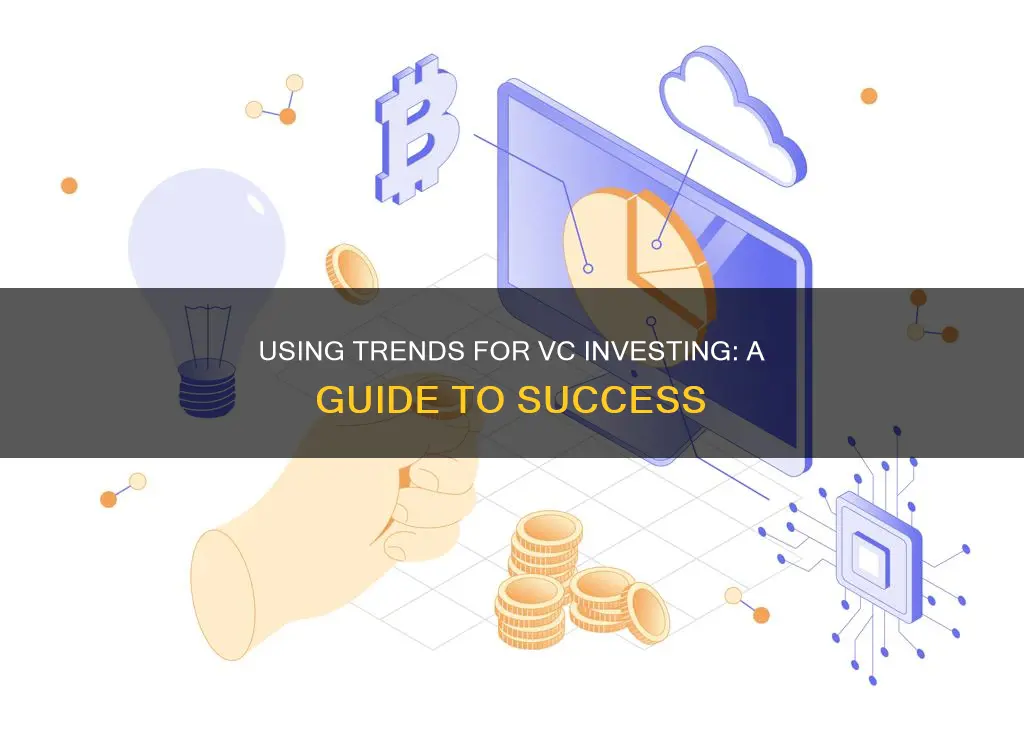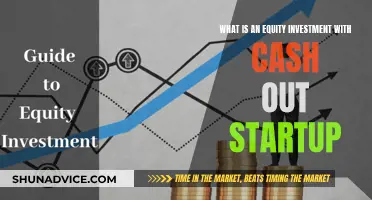
Venture capital funding has been on a rollercoaster ride in recent years, with the industry witnessing substantial growth in funding, mega-rounds, and unicorn startups. While the outlook for 2024 is optimistic, with investors expecting a rebound in VC fundraising, understanding the latest trends is crucial for making informed investment decisions. From the rise of generative AI and sustainable startups to the shift beyond Silicon Valley, staying ahead of the curve is essential for VC investors to identify lucrative opportunities and deploy their surplus capital strategically.
| Characteristics | Values |
|---|---|
| Number of mega-deals | On the rise |
| Equity crowdfunding | Gives normal people access to venture assets |
| Venture capital location | Leaving Silicon Valley |
| IPOs and SPACs | Record numbers in 2020 and 2021 |
| Funding rebound | Ahead in 2024 |
| Positive signs in Europe | 28% QoQ increase in funding for European startups in Q3 |
| AI hype | Driving overall VC funding |
| Signs of life in the IPO market | Small but notable signs of IPOs regaining momentum in 2024 |
| Cross-border payments | Fintech startups focused on this area are likely to attract VC investments |
| Bridge rounds for later-stage startups | Interim bridge rounds will help showcase financial resilience and potential for future growth |
| Investment amounts | Expected to level off in 2024 |
| Socially responsible ventures | More investments in eco-friendly ventures |
| VC secondary increases | VC secondary markets will increase with more liquidity opportunities |
| Government regulations on AI startups | Stricter regulations will impact investment in the sector |
What You'll Learn

AI hype drives overall VC funding
The hype around AI has been a significant driver of overall VC funding, with investors pouring money into AI startups. This trend has been compared to the advent of the consumer internet, with easy-to-use AI programs like OpenAI's ChatGPT gaining traction and dazzling users and investors alike. The excitement around AI has led to multibillion-dollar investments in AI startups, even as overall deals for startups in other sectors have declined.
According to PitchBook data, funding for AI companies climbed 27% globally in the third quarter compared to the previous year. In contrast, overall deals for startups fell 31% year-over-year. AI deals now account for nearly half of the total value of all VC deals. This shift in focus towards AI startups has been driven by the potential of generative AI technology, which has brought in billions in funding for the largest companies.
Generative AI, which can generate photo-realistic images and human-sounding text based on a few words of prompts, has caught the attention of investors. The declining cost of training machine learning technology and advances in research have also made it more accessible for ventures to enter the generative AI space. Additionally, public cloud providers are recognizing the revenue opportunity and are making significant acquisitions and partnerships in this area.
The giddiness over AI has prompted fears of an AI bubble, with skeptics drawing comparisons to the dot-com bubble. However, AI bulls argue that AI is different due to its rapid advancements and proven use cases. While not all AI startups will succeed, the excitement around AI has undoubtedly driven overall VC funding and will likely continue to do so in the near future.
Using Investing.com's Screener: A Step-by-Step Guide to Stock Screening
You may want to see also

The rise of generative AI
Generative AI is a category of artificial intelligence algorithms that can generate new content based on existing data. This technology has been described as a "game-changer", with the potential to increase global GDP by $7-10 trillion, or as much as 10%.
The impact of generative AI is already being felt across multiple industries, from content creation and data analysis to marketing, legal services, insurance, and media. It is expected that by 2025, over 75% of venture capital (VC) and early-stage investor executive reviews will be informed by AI and data analytics.
Streamlining Workflows and Driving Efficiencies
Generative AI streamlines workflows, reduces research and due diligence blind spots, and provides data-driven insights that enable faster decision-making. It can automate financial analysis, market analysis, forecasting analysis, competitive analysis, and risk assessment and management.
Advantages of Generative AI
Generative AI reduces the time and money needed for content creation, boosting productivity and profitability. It can also breed innovation, paving the way for new business models and applications.
Disadvantages and Risks of Generative AI
However, there are some disadvantages and risks associated with generative AI. One concern is the potential for copyright infringement and data security risks, as generative AI tools often source data from the Internet. Additionally, generative AI tools are not 100% accurate and may produce output that deviates from their training data, a phenomenon known as "hallucinations".
The Future of Generative AI
In conclusion, the rise of generative AI is transforming the way venture capital investors operate, providing new opportunities for efficiency and innovation while also presenting challenges and risks that need to be carefully navigated.
Etrade Cash Availability: Why Can't I Invest?
You may want to see also

The number of mega-deals continues to increase
The number of mega-deals, or transactions between large corporations, usually involving a merger or acquisition, continues to increase. Mega-deals are often newsworthy because of their immediate interest to investors and their potential to impact consumers. For example, in 2019, BB&T Corp. and Suntrust Bank merged for $66 billion to create Truist Bank, the sixth-largest bank in the US.
In the venture capital (VC) industry, mega-rounds, or investments exceeding $100 million, have been on the rise. In 2022, the largest venture funding deal went to Epic Games with a $2 billion investment. Other notable mega-deals in 2022 include a $1.7 billion investment in SpaceX and a $2.5 billion investment in Chinese electric vehicle maker GAC Aion New Energy Automobile.
While VC funding slowed down in 2023, there were still some substantial funding deals made. For instance, Physical Intelligence, a robotics company, raised $400 million in November 2024. The availability of dry powder, or uncommitted capital, from booming fundraising in previous years, is expected to catalyze VC deals and lead to a resurgence in deal activity.
In the first quarter of 2024, there were still some megadeals in the US, with the top three sectors—information technology, healthcare/biotech, and business and financial services—ushering in funding rounds over $100 million.
Cash Advance Investment Strategies: A Guide to Getting Started
You may want to see also

Venture capital leaves Silicon Valley
The Silicon Valley Bank's collapse in March 2023 was a shock to the startup ecosystem, leaving venture capitalists and founders scrambling to ensure their portfolio startups could continue to operate. This event, along with the challenges posed by the COVID-19 pandemic, has contributed to a shift in the venture capital landscape.
Silicon Valley has long been the leading hub for US startup funding, but it has recently lost some ground. The region is still number one, but other cities and regions are emerging as viable alternatives. The COVID-19 pandemic has accelerated the remote work revolution, and this, along with rising crime in San Francisco, has led to an exodus of tech workers from Silicon Valley. This exodus is reshaping the tech industry, with new hubs like Austin, Miami, and Seattle gaining traction.
The venture capital industry has seen substantial growth in funding, with the largest amounts allocated towards technology, healthcare, and innovation. Post-pandemic, digital transformation trends have led to increased investments in remote work technologies, telehealth, and sustainable startups. There is also a growing focus on diversity and inclusion, with a surge of women investors and founders entering the industry.
While Silicon Valley still leads in capital investment, other regions are catching up. In 2023, Washington, DC moved ahead of Los Angeles thanks to a significant healthcare deal. Additionally, China has emerged as a key player in venture capital, with hubs in Beijing and Shanghai. Other regions showing increased VC activity include London, Berlin, Tel Aviv, Bangalore, Tokyo, and the Nordic region.
The trends in VC investing include a focus on tech mergers and acquisitions, cross-border payments, bridge rounds for later-stage startups, and socially responsible ventures. With a high reserve of dry powder, investors are cautious but keen to seize promising opportunities. The competition for fundraising is intense, and investors are selective in committing capital to startups with experienced leadership and compelling, customer-centric solutions.
Cash Investments: Recording Entries and Their Impact
You may want to see also

Positive signs in Europe VC
Europe's venture capital (VC) market has demonstrated resilience and a positive outlook, with signs of recovery in 2024 after a challenging period. Here are some positive signs in the European VC landscape:
- Rebound and Growth: The European VC sector is showing promising signs of recovery in 2024, according to a PitchBook report. This rebound follows a significant decline in deal value in 2023, indicating a resilient and growing market despite challenges.
- Increasing Median Deal Sizes: The report highlights that median deal sizes across all stages in Europe have increased in the first quarter of 2024, with pre-seed funding being particularly resilient. The median pre-seed pre-money valuation reached €4.6 million at the end of Q1 2024, up from €2.5 million in 2023.
- Survival of High-Quality Startups: Tough market conditions have led to a rationalization, with higher-quality startups emerging stronger. While down rounds (where pre-money valuation is lower than the previous post-money valuation) have occurred, particularly in the UK and Ireland, the proportion of these has stabilised, indicating a more robust startup ecosystem.
- Sector-Specific Strength: The fintech sector led in terms of the largest median round size at €3.3 million, followed by cleantech at €2.9 million. Despite the challenges, these sectors demonstrate strong investment potential within Europe.
- Positive Growth Trend: According to the State of Tech Report, Europe is projected to increase its VC funding by 18% compared to 2020. This positive growth trend sets Europe apart from regions like the US, China, and the rest of the world, which are facing stagnation or declines in investment levels.
- Strong Early-Stage Investment: Early-stage investment has been a key driver of Europe's VC resilience. Despite the overall slowdown, funding for early-stage startups has remained robust, reflecting the continued attractiveness of Europe's startup scene and its potential for disruption and job creation.
- Outpacing the US in Key Areas: Europe currently surpasses the US in several aspects, including the share of global early-stage VC, the speed of unicorn production, and launching new startups. This dynamic indicates a vibrant and competitive European VC market.
- Encouraging Investor Sentiment: The State of Tech Survey revealed that 89% of global VCs and 87% of European VCs anticipate increasing deal volume in 2024 compared to 2023. This optimism, despite lingering concerns about declining exits and negative VC returns, showcases a positive outlook for the European VC market.
- Deepening Investor Pool: The pool of investors in European tech, including those exclusively focused on Europe, has expanded significantly. The number of unique investors has risen consistently over the past decade, and VCs have raised more than $50 billion in new funds locally since 2021. This indicates a growing interest in European VC opportunities.
- Emerging Sectors: Europe's VC landscape is witnessing a shift towards emerging sectors. AI, sustainability, and HealthTech are gaining traction, presenting attractive opportunities for investors. The Carbon and Energy sector, encompassing climate tech, accounted for 27% of all capital invested in European tech in 2023, showcasing a strong focus on sustainability.
Deepwoken Strategies: Using Investment Points Wisely
You may want to see also
Frequently asked questions
As of 2024, the latest trends in VC investing include the continued rise of mega-deals, with an increasing number of "unicorns" (privately held startups with a valuation of over $1 billion) and "hectocorns" (worth at least $100 billion); the diversification of VC investing beyond Silicon Valley to other parts of the US and the world; and the growing importance of AI in VC funding decisions, with AI startups taking centre stage.
By staying up to date with the latest trends, you can identify sectors and companies that are likely to receive VC funding. For example, as of 2024, trending sectors include IT, healthcare, biotech, financial services, and renewable energy. Additionally, VC investing is expanding beyond Silicon Valley, with cities like Austin, New York, Berlin, London, and Stockholm gaining traction. Keeping an eye on these trends can help you make more informed investment decisions.
Using trends to inform your VC investing strategy can help you identify sectors and companies with high growth potential. It allows you to stay ahead of the curve and capitalise on emerging opportunities. By investing in companies that are aligned with current trends, you increase your chances of successful returns. Additionally, staying informed about trends can help you manage risks and make more strategic decisions about when and where to invest your capital.







